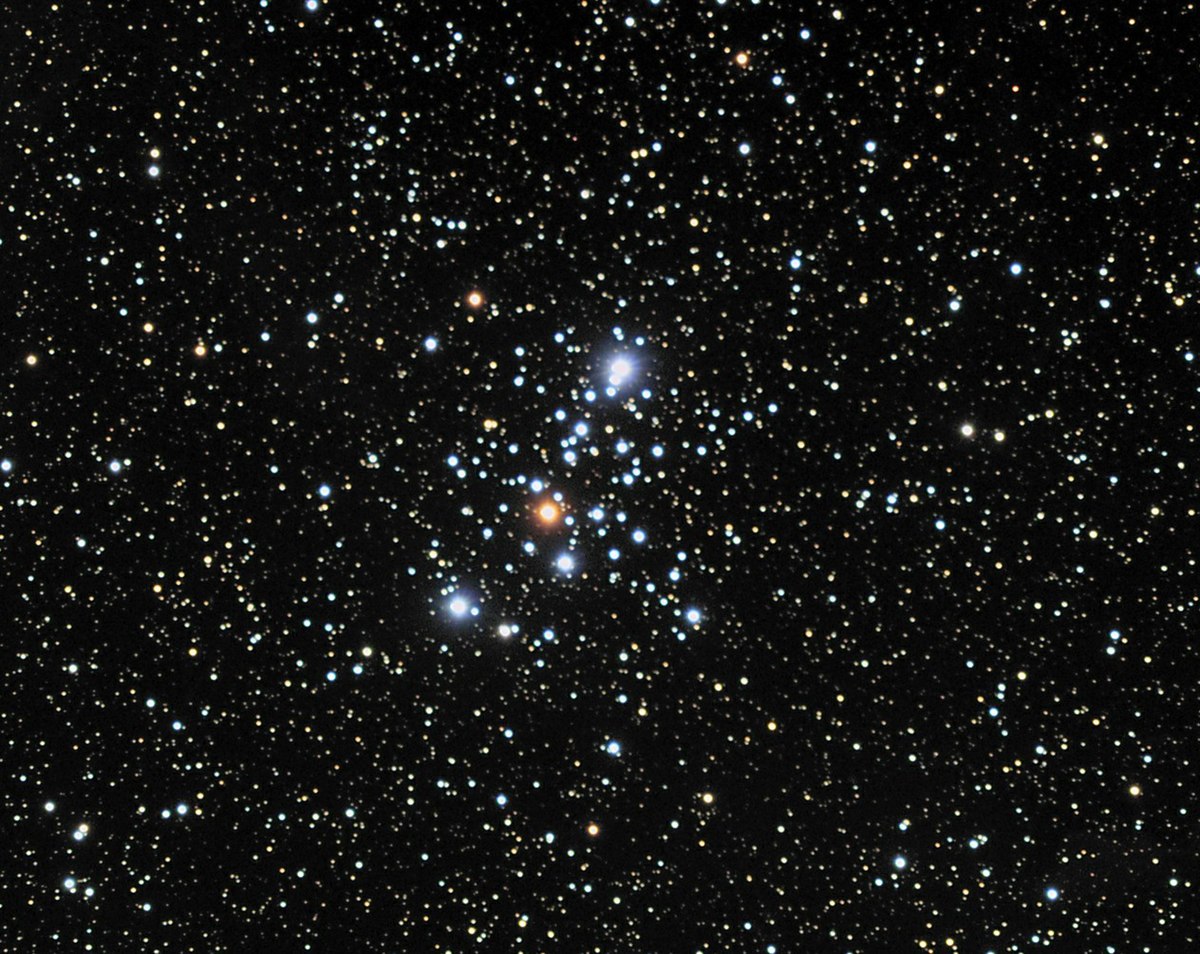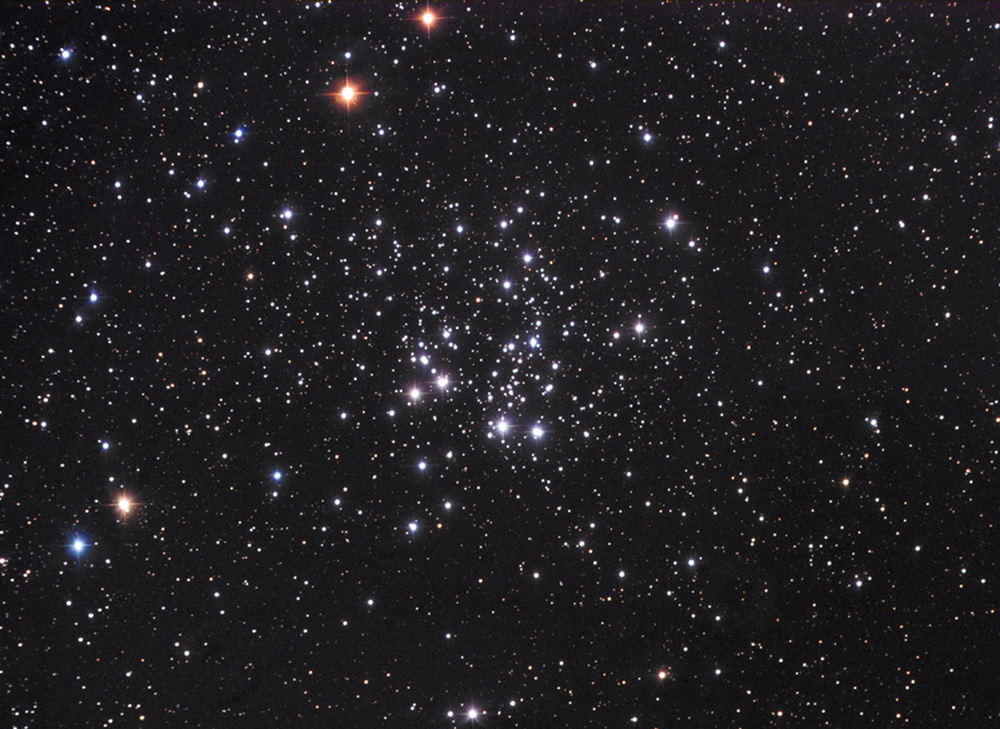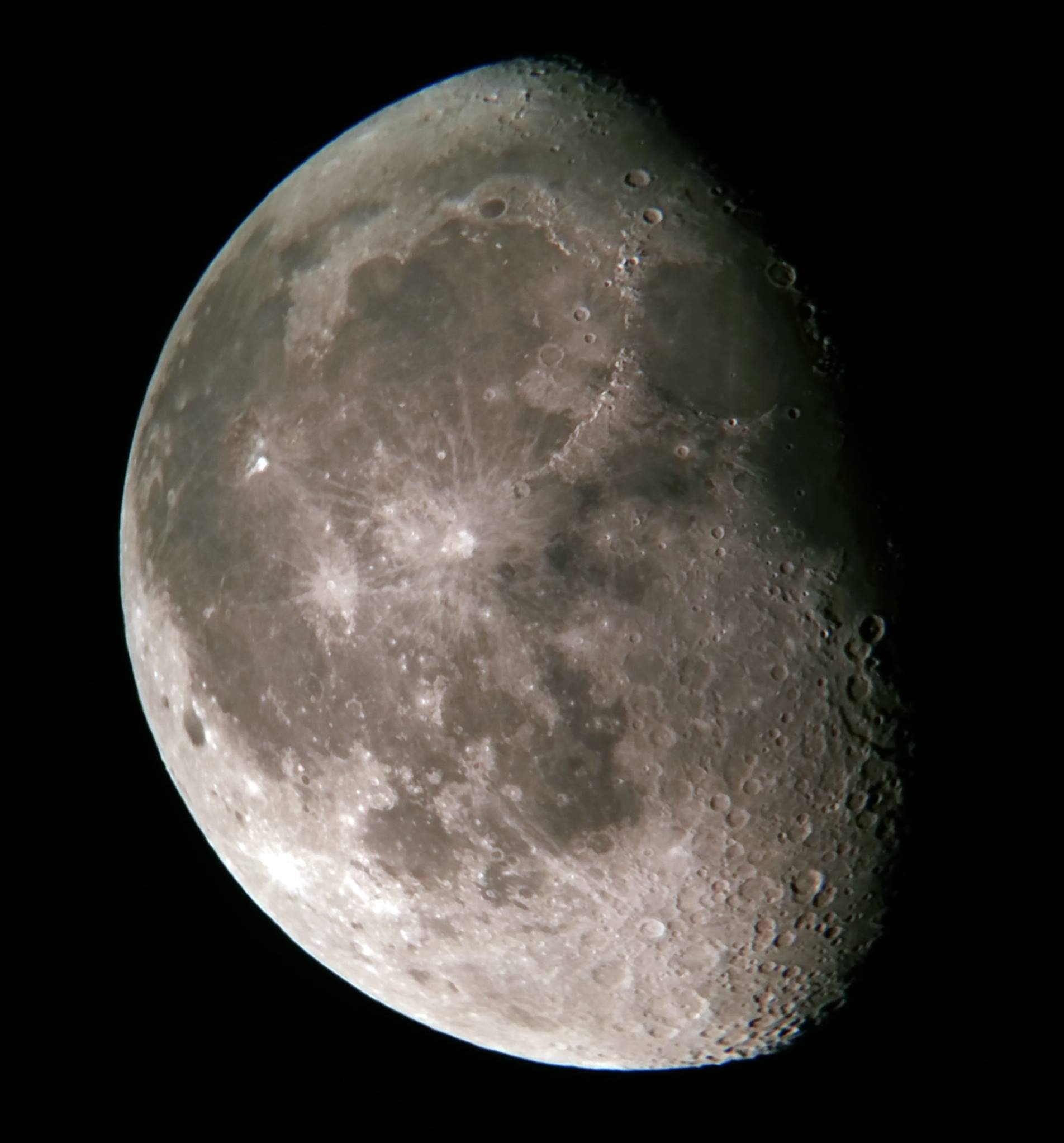
This cluster looked really nice tonight, with a lot of crisp stars. The E.T. shape was readily apparent. The brightest two stars make the eyes, and the brightest member is a bit yellowish. There is a large cluster of fainter stars near the chest region. Using my 18mm, it spans about half of the field.

This little cluster is below the feet of NGC 457. It is small and fairly compact. The stars are dimmer than those of NGC 457. The best view is with the 11mm. Perhaps a dozen stars are visible. Three of the brightest members form a straight line tangential to the rest of the cluster.

Using the 11mm, this cluster is very nice. Its overall shape is triangular, with the two brightest members forming a couple of the vertices. About halfway between these two stars is a red giant, which appears deep orange to my eyes. Altogether, about 20 stars are visible in a tight cluster. A couple of the stars appear blue and the others appear white, which makes this cluster very colorful and enjoyable to look at.

This is a nice open cluster and it fairly large. Overall, it is oval, looking to me like a flying saucer. At the top of the saucer is a sideways horseshoe grouping of stars, with the brightest two members at the ends. At the bottom of the UFO are four bright stars in a diamond and both sides consist of trapezoidal groups of stars. Many fainter stars are interspersed throughout the cluster. Within the horseshoe is a tight group of much fainter stars.

This looks spectacular tonight. Through my 18mm eyepiece, hundreds of stars are visible. Both cores are nicely compact. A few of the stars appear yellow or orange. Right between the two clusters is a bright orange star. NGC 889 has an orange star near the center. I don't know if I've ever seen it look this good from my driveway. The additional stars from the backdrop of the Milky Way makes it even more beautiful.

This cluster is very large, more than filling the field, even with my 18mm eyepiece. It does resemble a stick figure flexing his arms in a muscleman pose.The cluster contains dozens of stars.
Getting a bit bored of open clusters, I thought I'd work on a few double stars. I'd already completed the doubles in Cassiopeia, but nearby Triangulum still had a bright one I hadn't looked at before. Using the 18mm eyepiece, this double was wide and pretty. The primary was pale yellow-white and its companion was a nice medium blue. It reminded me a bit of Albireo, although not quite as bright. Still, it was gorgeous and one of my new favorites.
